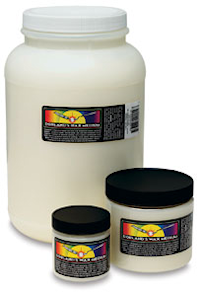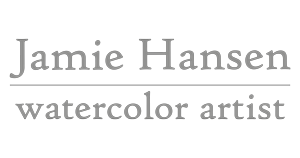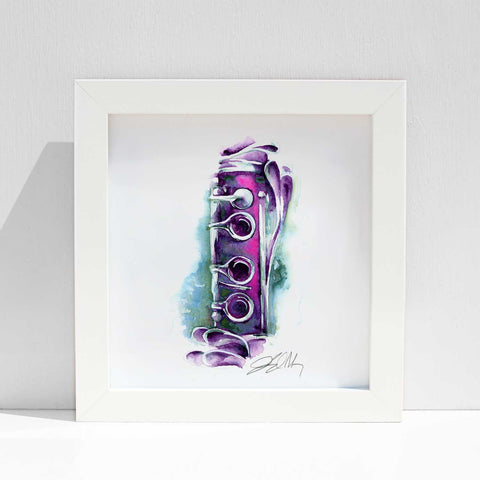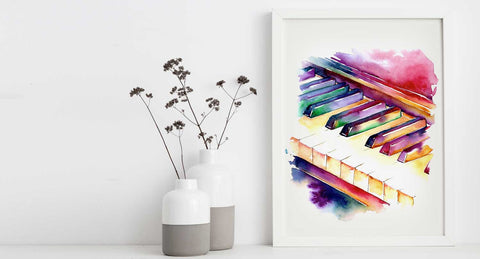
How I Eliminated expensive glass and framing on my watercolors
Working in a few standard sizes does a few things to cut down on a framing budget:
- If you have a piece framed that you don’t love, you can use the frame for a different work.
- If you can buy lots of one size at the same time, you can often negotiate quantity discounts.
- Bookkeeping, gallery walls, and lots of other parts of your art handling can be much easier when your pieces are all the same size.
But that wasn't really working for my artistic spirit.

The first problem was that I wanted to create big pieces: like the four foot long oil paintings that I created in college. The second problem was that I wanted to create unusually sized art: like the 6" x 30" brightly colored clarinet that I had so much fun drawing. I created a 15" x 30" Iris diptych and spent more than $300 at the frame shop. They were beautiful, but I didn't have the budget to make a whole gallery wall like that. Art needs to be accessible, right? Not just a luxury for wealthy people.
I had to get rid of those expensive frames.
Some of the old masters painted on wood panels and their work has survived for hundreds of years. Panels would make my art sturdy and easy to transport. They would allow me to work bigger. I had to figure out how to make panels work for my watercolors.
I have a lot of philosophy about removing glass.
I wanted the works on paper I created to become a thing that paper is sometimes not – permanent, solid, and sturdy. When the barrier of the glass is removed, the art becomes a touchable experience - a more raw and connected experience. It's not a pretty little thing that's ensconced in a case. It's more like the furniture or a large scale oil painting - it's a more tactile part of the viewer's space.
But it also came down to economics for me.
I also had a show coming up at the Anderson Arts Center. I had only a few months to get together some new works for the show and I had a really specific aesthetic that I wanted to achieve. I wanted white-on-white framing. All my art was a riot of bright color and I loved the idea of the white frames on their beautiful brick walls.
So, I innovated. Well. okay... I got on YouTube.
I learned quickly that I work best on paper. I tried Ampersand's Aquaboard. I tried making panels like Ali Cavanaugh uses for her modern frescoes. I painted in watercolors on canvases and boards finished with Golden's Absorbent Ground. I spent hundreds of dollars on new art supplies in the hopes that these supplies would save me money at the frame shop.
I watched a lot of videos about mounting paper to boards, canvasses and panels. I took a lot of inspiration from John Lovett about the specific materials that he uses. I struggled to find the right glue, the right paper, and a source for custom-sized cradled wood panels.
 And I think that I've got it.
And I think that I've got it.
These are the specific materials that I use:
- I start with Arches hot pressed watercolor paper and wood panels from Blick, Rex Art, or JS Canvas.
- I paint the back and sides of the panel with a white interior semigloss latex paint. I think it's important to finish the sides and the back of the panel in case it is ever exposed to moisture.
- I glue the paper to the board (before or after the painting is completed - either way works) with Lineco Neutral pH Adhesive. I use another panel to weigh the paper down as it dries.
- I add several coats of Krylon UV Archival Varnish.
- I finish with Dorlands Wax medium. There are lots of watercolor artists using this to finish their pieces and I love the look. I also love the process of buffing the wax up to a shiny finish.
That's it! I started small until I figured out the best techniques for avoiding bubbles and wrinkles in the paper. I sand, buff, and carefully paint all parts, like I'm finishing a piece of furniture. I can tell a difference in some of the first pieces that I mounted - I've gotten neater with the newer works that I'm creating.
I hope that my experience helps you get back in the studio and dream big!



